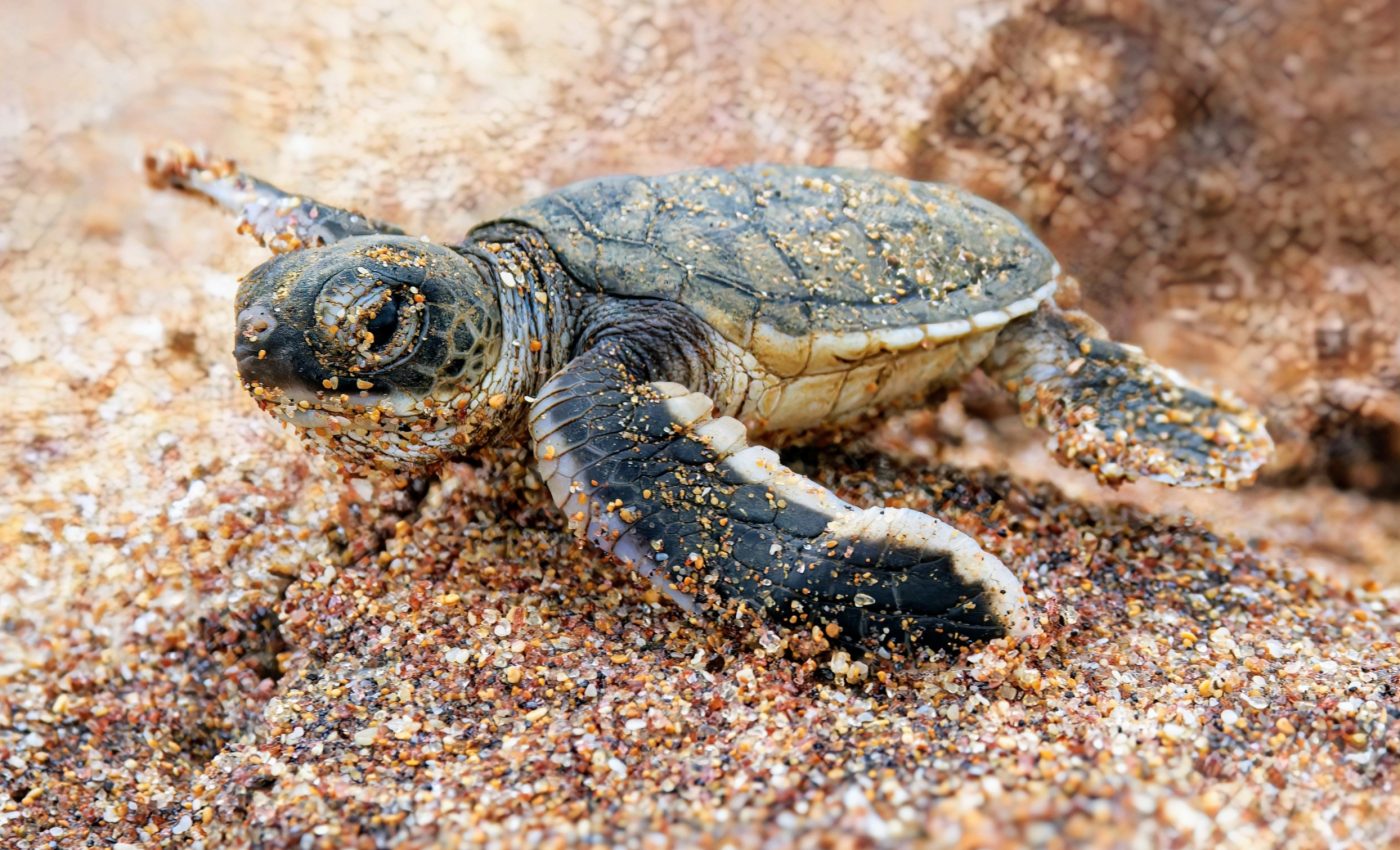
Rainfall impacts the size of sea turtle hatchlings
Female sea turtles lay their eggs, cover the nest with sand, and return to the ocean, leaving the eggs to develop and hatch on their own. The journey to survival is fraught with challenges, from nest predators to rising temperatures. The odds are grim, with only about one in 1,000 hatchlings making it to adulthood.
Hatchling size and survival
Size plays a crucial role in a hatchling’s survival. Larger hatchlings, which can move faster, are more likely to survive because they spend less time exposed on the perilous beach sands.
Research shows that both air and sand temperatures significantly influence sea turtle hatchlings. Cooler temperatures tend to produce larger, heavier hatchlings with a higher proportion of males, while warmer temperatures speed up hatching and offer some protection from predators.
The crucial role of temperature
For endangered species like the loggerhead (Caretta caretta) and green (Chelonia mydas) sea turtles, cooler and moister conditions result in stronger hatchlings. However, rising temperatures might shorten incubation periods, and unpredictable rainfall can disrupt growth, potentially threatening their survival.
Maintaining a balance between temperature and moisture is critical for the health of these vulnerable sea turtles. However, too much moisture can be lethal for developing embryos.
Rainfall and turtle hatchling size
An international study led by the University of Tübingen in Germany, in collaboration with Florida Atlantic University (FAU), explores how fluctuating rainfall affects the development of sea turtle hatchlings. The study reveals that rainfall has a more significant impact on hatchling development than changes in air temperature.
This research, which analyzed data from 37 beaches worldwide – including a longitudinal study in Florida and experimental studies on the Cape Verde Islands – demonstrates that precipitation is crucial in determining hatchling body size.
Rainfall cools the beach surface and increases moisture, which is essential for egg development, making it a better predictor of hatchling body size than temperature alone.
Impacts across different species
The results, published in BMC Ecology and Evolution, show that rainfall’s impact varies between species. For loggerhead turtles, heavier rainfall leads to hatchlings with smaller carapaces (shells) but greater weight. In contrast, green turtle hatchlings develop smaller carapaces without a change in body mass.
“Findings from our study highlight the need for more localized data on how regional weather influences incubation and hatchling development,” said co-author Jeanette Wyneken, a professor in the Department of Biological Sciences at FAU’s Charles E. Schmidt College of Science. “These data are essential for refining conservation strategies to protect sea turtles amidst global warming.”
Climate’s impact on hatchlings
The study began with data collected from Boca Raton, Florida, comparing hatchling size (length, width, and mass) with local climate factors.
The researchers then gathered data from 19 beaches with loggerhead hatchlings and 17 beaches with green turtle hatchlings.
The final part of the study examined hatchlings in Cabo Verde after a few days of rain during the dry season to assess how precipitation affected their size.
Weather during the nesting season
In the Mediterranean, especially on the beaches of Cyprus and Turkey, the dry season brings very little rain from the North Atlantic. For green turtles in these drier regions, the effects of precipitation become noticeable only after the dry season ends.
In contrast, in Florida, precipitation levels remain relatively consistent throughout the nesting season due to local weather patterns, although droughts and heatwaves are common in July and October.
“It’s not clear exactly how rain affects hatchling size,” Wyneken said. “One idea is that rain cools the nests, which can change the temperature and impact the sex ratio of the hatchlings. This could lead to differences in hatchling size and shape, similar to how male and female hatchlings of other turtles, like the giant river turtle, have different shell shapes.”
Local conservation efforts
As climate change alters rainfall patterns – making wet areas wetter and dry areas drier – the impact on sea turtle nesting sites suggests that global conservation strategies for loggerhead and green sea turtles may need updating.
“Effective management units for conservation should focus on regularly updating and including important nesting sites, highlighting the importance of local conservation efforts,” said Wyneken.
“Analyzing local data from various nesting sites is crucial for understanding sea turtle nesting patterns. These local databases should be made more accessible and widely shared to improve our knowledge and support local conservation efforts.”
—–
Like what you read? Subscribe to our newsletter for engaging articles, exclusive content, and the latest updates.
Check us out on EarthSnap, a free app brought to you by Eric Ralls and Earth.com.
—–













